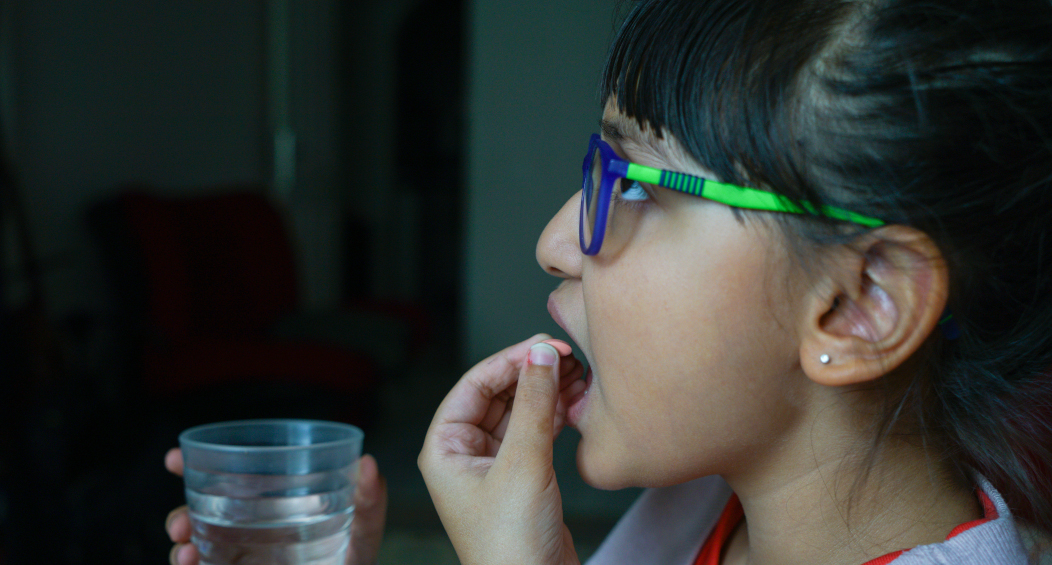Seasonal affective disorder (SAD) is a form of depression that can occur in children as well as adults. SAD affects people mainly in the fall and winter months, when days are shorter and exposure to sunlight is limited.
Seasonal affective disorder typically causes feelings of sadness and depression. But kids affected by it might have symptoms of irritability, anger and/or temper tantrums. The good news is that once SAD is diagnosed, treatments are effective, and there are many things you can do at home to help your child feel better.
COMMON TREATMENTS FOR SEASONAL AFFECTIVE DISORDER
- Light therapy. This is one of the most successful treatments for SAD. Being exposed to sunlight or an artificial light that mimics outdoor light can help lessen the symptoms of depression. While they used to be quite expensive, light boxes and light therapy lamps have come down in price in recent years and can be purchased for home use.
- Cognitive behavioral therapy (CBT). This is a form of talk therapy that is effective in a wide range of problems and is considered a gold standard in treatment of mental health issues.
- Antidepressants. Often for someone with SAD, these medications are only needed during the fall and winter months.
HOW TO HELP A CHILD WHO HAS SEASONAL AFFECTIVE DISORDER
If your child is struggling with seasonal affective disorder, using the following strategies at home can help.
1. Do things your child enjoys.
This is called behavioral activation, and it helps disrupt the negative thoughts that come with depression. Encourage activities you know your child likes. Bundling up and going outside can be really helpful, especially when the sun is out. People tend to hibernate indoors in the winter, but kids crave being outside. If they resist the idea, try it for a short time (5-10 minutes). Once outdoors, extend the time if they’re having fun.
2. Focus on positive thoughts.
When a person is depressed, very negative thoughts run through their head. Work with your child on changing those. Let’s say your child says, “No one at school likes me anymore.” Talk it out with them: Is that true, or is that just your feelings talking? Is that thought making you feel good? Then work with them to come up with more helpful thoughts, such as, “A classmate helped me pick up my books when I dropped them today.”
3. Having a schedule and maintaining routine are important.
It’s easier on kids when they know what to predict throughout their day, especially during tough times. Aim to have meals at roughly the same time each day. Try to maintain set bedtimes and wake times. Keeping a predictable schedule can help reduce irritability and temper tantrums as well as other symptoms of depression.
4. Continue using your family’s regular behavior management strategies.
Some families relax discipline when they know their child is going through a hard time. However, your child needs to know you’re still in charge. Continue your family’s usual discipline strategies, while also giving plenty of love and attention during challenging times. When you let things slide, it can be confusing for children. Don’t give “free passes” consistently.
5. Work with your child’s school.
Check in with your child’s teachers. Let them know what you are seeing at home, and ask what they’re noticing in the classroom. You might be able to suggest strategies that can be helpful to the teachers, and they may have insights that could help you at home.
6. Encourage friendships.
Depression can make people want to be alone, even for kids who normally enjoy being with others. Set up play dates for your younger child, and encourage older kids to spend time with friends.
7. Limit alone time.
Teens dealing with symptoms of depression often will retreat to their bedrooms. As your child gets older, wanting more time alone is normal. But too much time on their own, especially if they are experiencing depression, isn’t good. Set some boundaries and house rules if needed. Some good ones to start with include:
- Do homework in a common area of the house for a certain period of time each day.
- Use cell phones and computers on the first floor of the house or in the living or dining room where other family members are; conversations will naturally happen when they are around others.
- Share family meals with phones turned off, allowing time to socialize.
8. Monitor social media.
Your child’s social media feed can help show what’s going through their minds. A teen who is depressed may be watching self-harm or suicide videos—in this case, seek professional help immediately.
9. Check in with your child often.
Have open conversations in your home about depression and its symptoms. Let your child know you’ll be checking on them regularly.
It’s OK to ask, “Are you having thoughts of hurting yourself?” Studies show that asking this question does not put that idea in their minds, and it can often lead to productive, helpful conversations. From a safety perspective, this is an important question especially when a child is experiencing other symptoms of depression.
The hardest part about depression is getting started. Kids are fortunate to have parents to help motivate them. When you play an active part in tackling the symptoms of depression head on, the whole family will benefit.
If you are concerned about a loved one’s safety, please visit our Suicide Prevention page, which has links to our Psychiatric Intake Response Center (PIRC) and other crisis hotlines.





